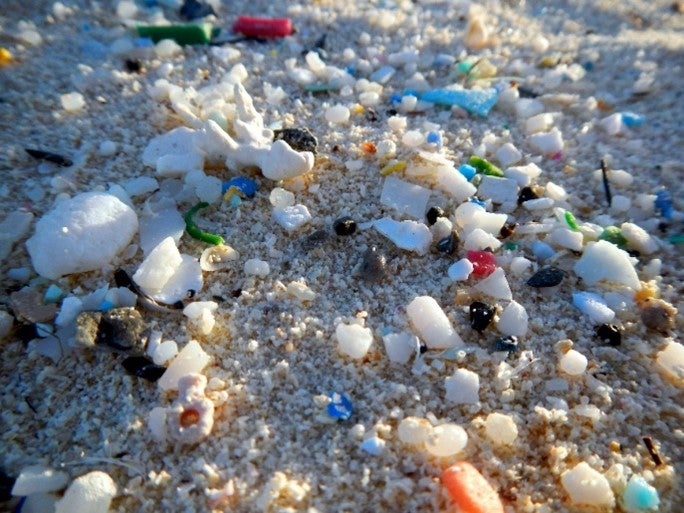
Protecting Our Ocean from Plastics
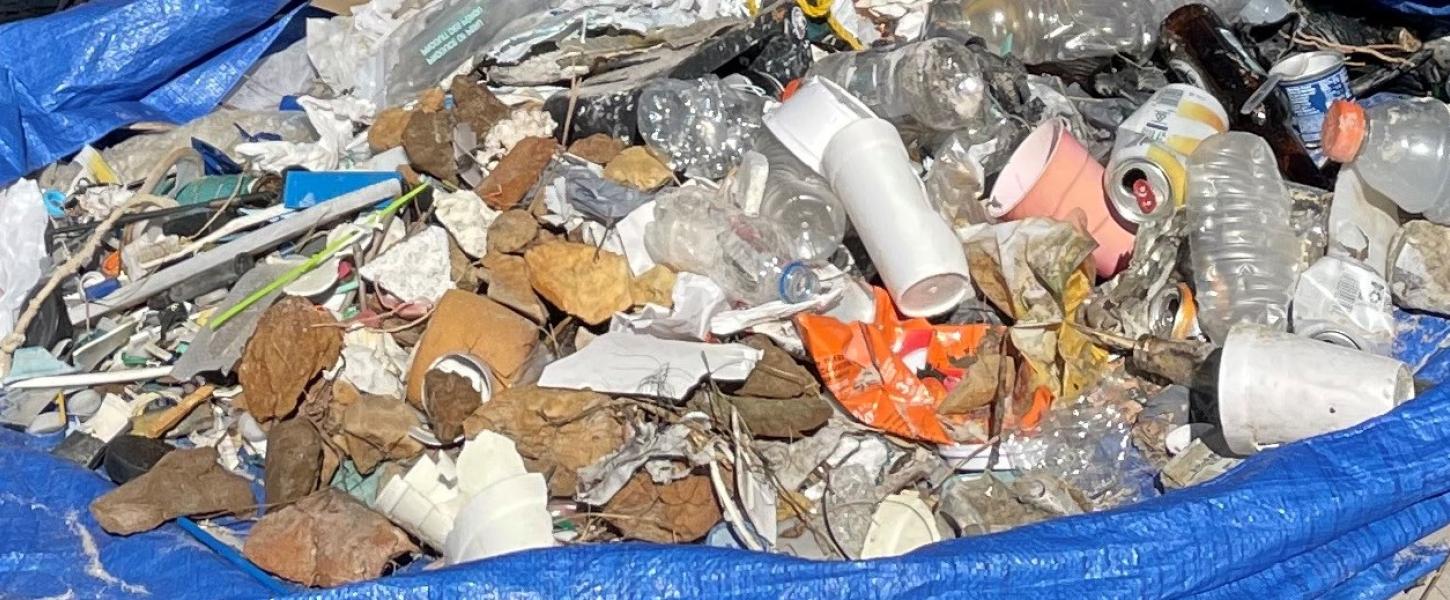
Plastic pollution is an enormous problem for our oceans and the wildlife that depends on them. You can help us protect these delicate ecosystems for future generations.
The Problem
Plastic pollution presents a growing problem worldwide, particularly for our oceans. About 90% of the trash is plastic! It’s not hard to imagine why. Plastics are everywhere, especially those meant for one-time use. In fact, 40% of all plastics produced are single-use and most are not recycled. Think about how many plastic items you encounter every day!
You don’t have to be near the coast for your trash to end up in the ocean. Litter easily travels from inland areas to the sea.
Much of the marine debris are microplastics, smaller than a pencil eraser. Sometimes they start out small, like microbeads found in cosmetics or packing materials, but larger plastics also break down into tiny pieces over time. As the elements wear them down, they become smaller and smaller, but never quite go away.

How Long Until It's Gone?
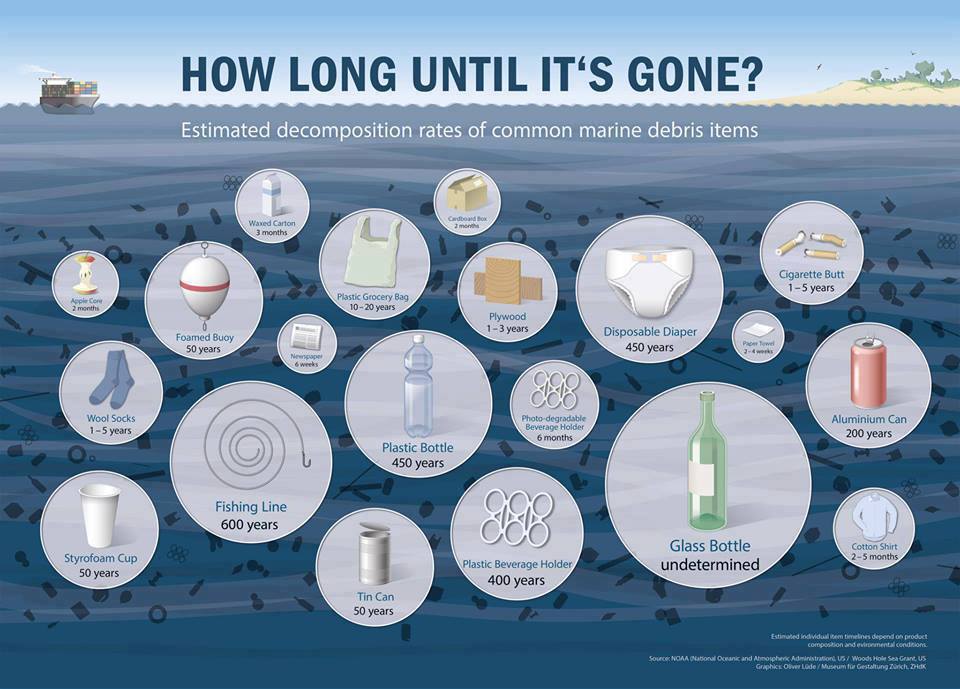
Ingestion
Sea creatures often mistake plastics and other marine debris for food. 90% of seabirds and 30% of turtles are found to have plastics in their stomachs. Larval fish, mussels and other organisms feed on microfibers shed from synthetic clothing, which make up 85% of microplastics found in the ocean. Since animals cannot digest plastics, it remains in their stomachs and makes them feel full until they eventually starve. A recent study found that over 100 emaciated sea turtle hatchlings stranded along the northeast Florida coastline had hundreds of plastic bits in their guts.
Plastics attract deadly chemicals and metals from the water around them like a sponge, and when consumed, it leaches into the animal’s body. This causes damage to their liver and cells, as well as to their reproductive systems, leading to less production and lower catch for fishermen. This is harmful to the species that ingest the plastics and to the ecosystems in which they live, but also to us when they end up on our dinner plates.
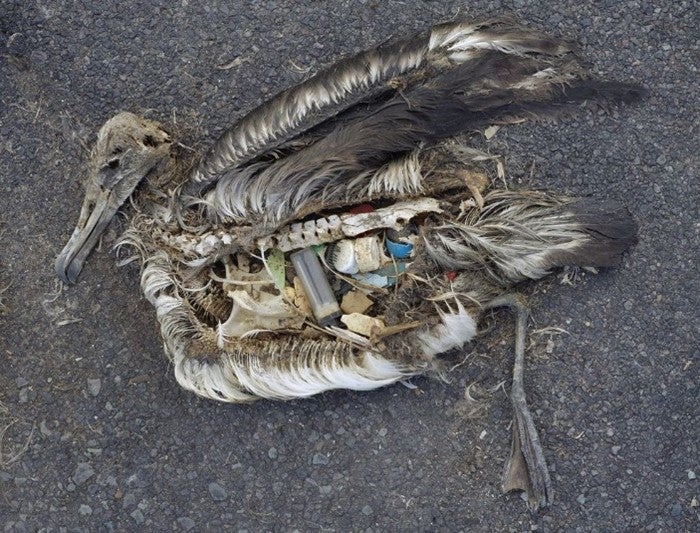
Photo Credit: Chris Jordan. From ‘Midway: Message from the Gyre
Entanglement
Ghost fishing. It sounds spooky. And it is for marine wildlife. Ghost fishing refers to the long life fishing gear can have beyond its intended use. Sea turtles, birds, and marine mammals like dolphins and whales breathe air. When they become entangled and are not able to make it back to the surface to breathe, they drown. Six-pack rings, plastic bags and other types of debris also entangle wildlife, but the majority of large plastic pollution in our oceans is from abandoned fishing gear.
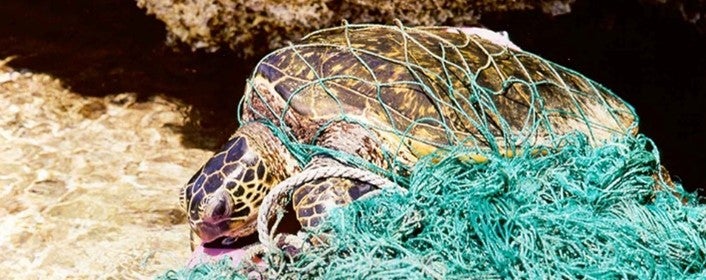
Photo credit: NOAA.
Solutions
What can we do to make an impact? It’s not as hard as you might think!
- Remember to Skip the Straw and Stash the Trash!
- When fishing, use the monofilament line containers found at your local spot. If your tackle has come to the end of its life, place it in the appropriate receptacle.
- Coastal cleanups and river sweeps are a great way to help! Every little bit makes a difference!
MyFWC Coastal Cleanup events and Trash-Free Seas International Coastal Cleanup Events
- Tell your friends! Spreading the word about the dangers of single-use plastics and other debris in our environment will help others make informed choices, too!